Cycling In Cold Weather
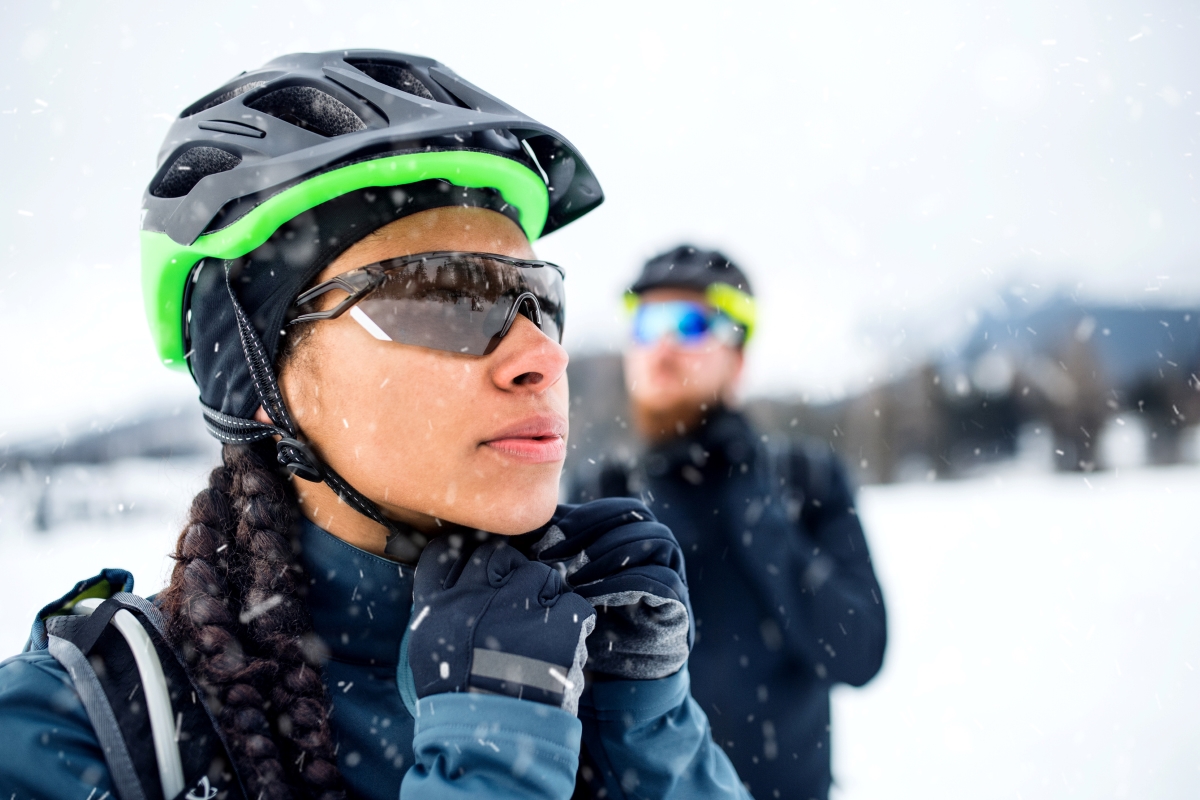
Bicycle riding in cold weather
It is far too easy to put off getting up and out on the bike while the weather is cold. However, by maintaining your cycling training throughout the colder months, you can make sure you are at peak performance, ready for when the weather starts improving and the sun starts warming us up again. Bicycle riding in cold weather does not have to feel like a chore or an obstacle to be conquered.
Cycling is not only a great form of low impact exercise that improves your cardiovascular health. It is also the perfect tonic for when you are feeling sad. Getting out on the bike and experiencing the joys of nature, no matter what season it is will put you in a good mood. Endorphins are released post-ride, making you feel great. It is also the perfect opportunity to get out of the house and experience the world. If you struggle to get out on the bike when it is cold, do not worry, you are not alone.
Preparation is key
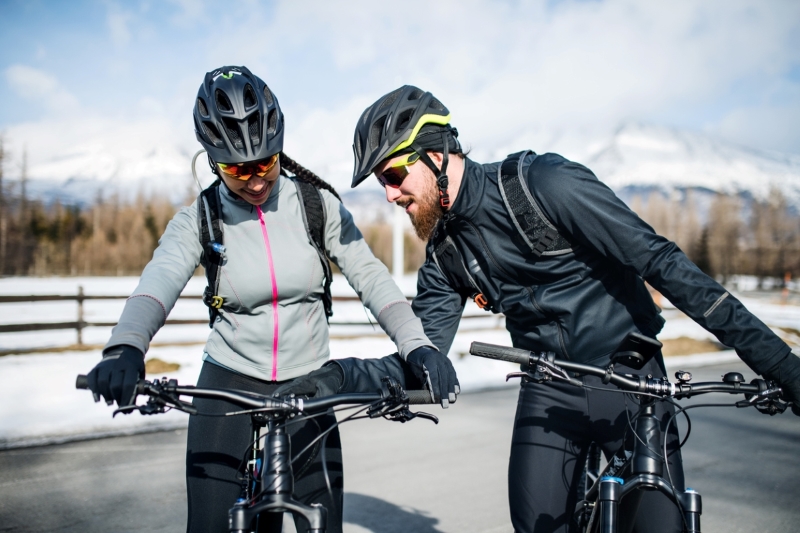
Firstly the key to bicycle riding in cold weather is to be prepared. Before your ride, have a look at the weather forecast. Check what the temperature will be, whether there is any strong wind (if so, try to plan your ride, so you get the added push of some tailwind on your way home) or if it is going to rain. By checking the weather, you can pick out the best layers and cycling clothes for the weather you will be cycling in. Also, you can get prepared mentally. There is little worse than being caught out by the rain mid-ride on a cold winter bike ride. At least if you knew it was coming, your mind has already come to accept what you will be facing, and you know that you have the clothing and equipment to keep you and your possessions safe throughout any downpour. Clothing for cycling during the colder months While bicycle riding in the colder months, you need to dress to stay warm and be visible. The shorter days and grey overcast weather conditions mean that you need to work harder to make sure you are seen while out on the road.
Layering to keep your core warm
The key to staying warm (without overheating) in cold weather is to master the art of layering. Layering is the practice of wearing several thin tops in a specific order to help your body keep warm while still being able to breathe and wick away moisture. Firstly you will need a baselayer. The best natural fiber material available is Merino Wool. It has all the properties you need to stay warm, wick away moisture from your body, and work with you to regulate your temperature. There are also several suitable synthetic materials that make for a good baselayer.
The filling of your layer sandwich should be a cycling jersey. In particularly cold weather (getting close to freezing), you will need to invest in a fleece-lined and windproof long sleeve cycling jersey. These are incredibly versatile and well worth the investment. Once the weather starts to improve, they can be worn by themselves to keep you nice and toastie during early morning rides.
Finally, the last layer should be a waterproof cycling jacket. Even if you checked the weather and there is no chance of rain, it is still better to be prepared. As mentioned above, get a high viz jacket that is a bright color and has reflective strips. This will give you added peace of mind on rides when it is overcast and grey outside.
All the rest
Keeping your torso warm is a priority while bicycle riding in cold weather, that way, you can stave off hypothermia in extreme circumstances, and your body can safely continue to pump warm and nourishing oxygen-filled blood to your extremities.
You also need to think about wind chill and keeping your hands and feet warm. Although keeping your vital organs warm is a priority, you do not want to risk losing mobility in your hands and feet, or worse yet, risk getting frostbite. Although your legs may continuously be moving, you will need more than just your cycling shorts if you are cycling in freezing temperatures. Either get some leg warmers. These are great as they are easy to take off mid-ride if you find your legs getting too hot. Or a pair of padded thermal cycling leggings.
Invest in a good pair of winter cycling gloves. You will need to retain full mobility in your hands so that you can change gear and brake when required. A neck warmer is the perfect protection for your neck and lower face from wind chill. A long neck warmer can be pulled up all the way up your head to cover your ears and head too. Just make sure you get one that is breathable, as you do not want it absorbing any sweat or condensation from your breath, which will only make you colder.
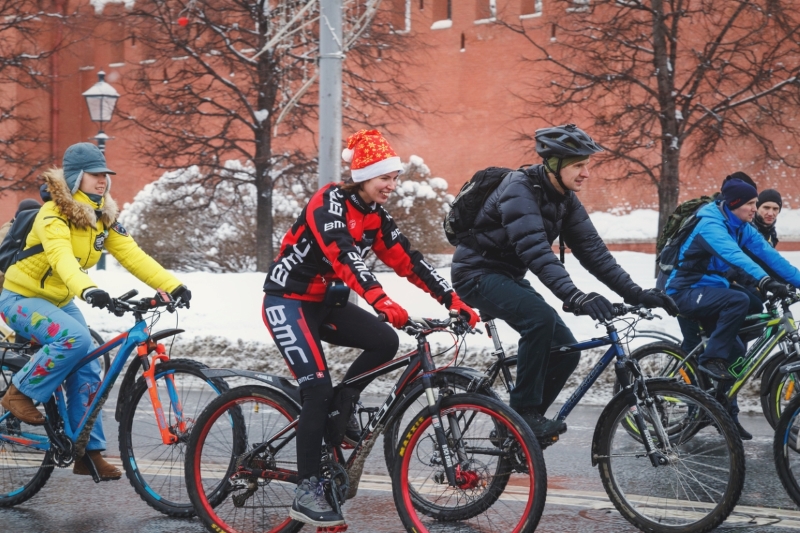
Finally, protect your feet with some thick wool gloves. If there is any chance of rain or the ground is already wet, also wear some overshoes. These are made of wetsuit-like material and stop your shoes from absorbing water. Damp and cold feet will quickly ruin any enjoyment you were having while cycling in the cold. Prepare your bike for the cold Fortunately, your bicycle does not have feelings. It will not get hypothermia or refuse to go out in the cold. However, you should carry out a few quick checks before taking it out in cold weather to ensure you will be safe. Tires Before your ride, check your tire pressure. For road cyclists, this is usually relatively high, around 100psi or above. If the roads are wet or there is any risk of there being any ice, it is recommended that you ride on a lower psi. Just a 10psi drop in your tire pressure will result in your tire having more contact with the road, which helps with traction and stability.
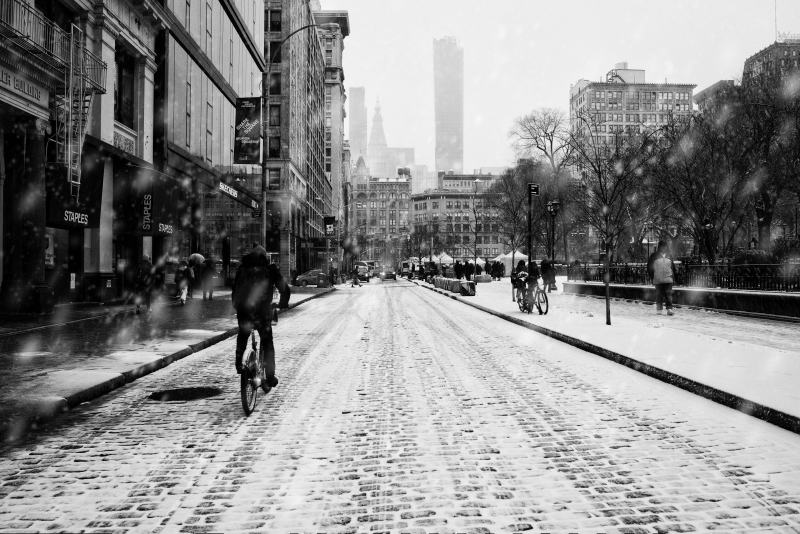
If it is snowy or Icy, then you should buy some wide tires with thick tread. For similar reasons to lowering your tire pressure, you need to distribute your weight when the surface is slippery. In extreme conditions, you will need to get snow studded tires (small metal studs installed to cut through snow and grip to the ice below), but fortunately, most of us do not have to contend with this type of extreme weather.
Brakes
An essential part of your pre-ride checks at any temperature is to test your brakes to make sure they are working effectively. Cold weather can impact how effective your brakes are at bringing you to a stop. Especially the traditional V brakes that squeeze your rims on either side with bits of rubber to bring you to a halt. Once you are satisfied they are working fine, try to warm them up a bit at the start of the ride. Do not do any emergency stop. Just gently pull at your brake levers to the point that you feel a little bit of resistance. This will help ensure that they will be responsive when you need them most. Plan your route It is no secret that it can be hard to motivate yourself to get up and out for a bicycle ride in cold weather. Plan your route clearly and if you are being adventurous and going off the beaten track, tell someone where you are going and make sure you take a mobile phone to contact someone in an emergency.
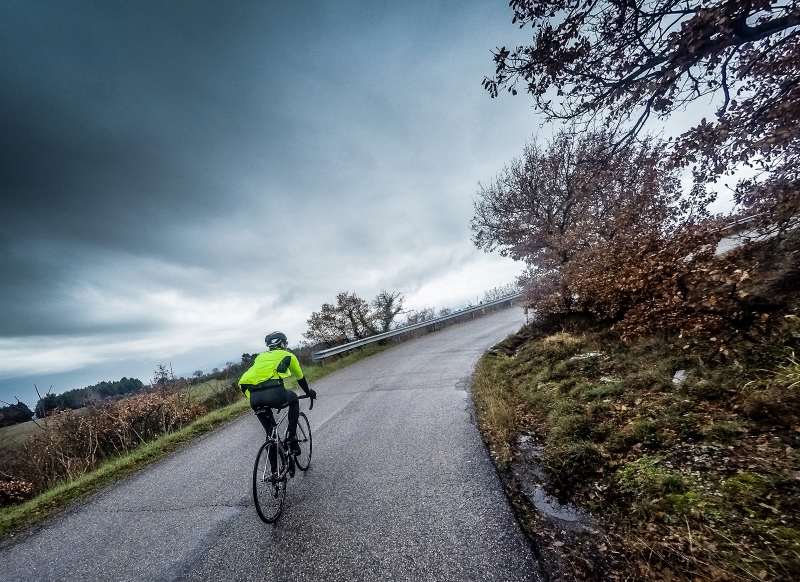
Final thoughts
Cycling in the cold does not have to give you anxiety. Just imagine how proud of yourself you will be when you come back from that ride to a welcoming home and a nice warm shower. By bicycle riding in the cold weather you will improve your fitness, mental health, and resilience. Also, a lot of the gear that you need to buy can be worn throughout the year in various combinations.
Do not overthink it too much, be prepared for the conditions, dress for the occasion, stay safe, and don’t let the weather ruin your cycling plans. It is incredible how quickly your body warms up once you get going.